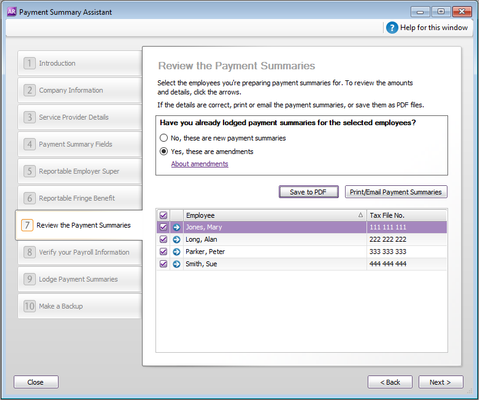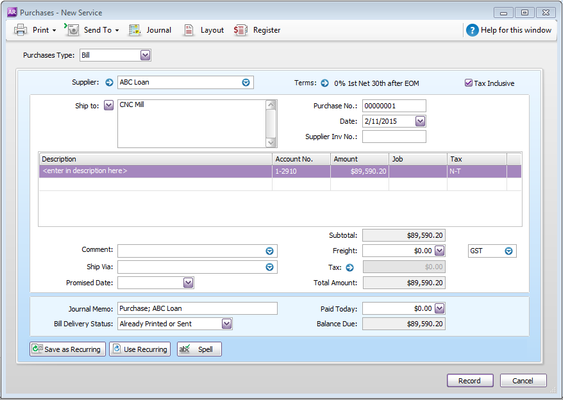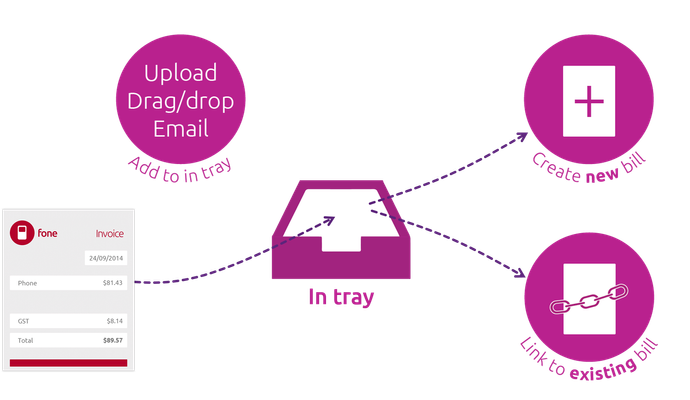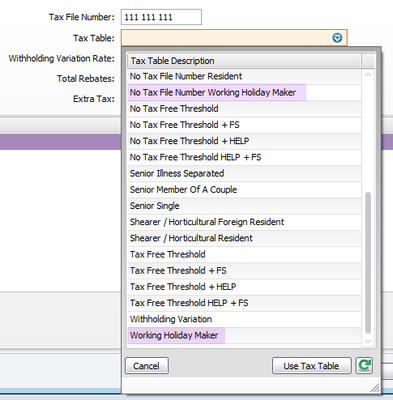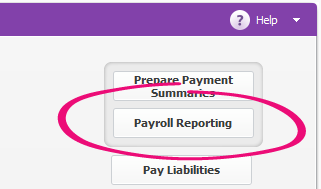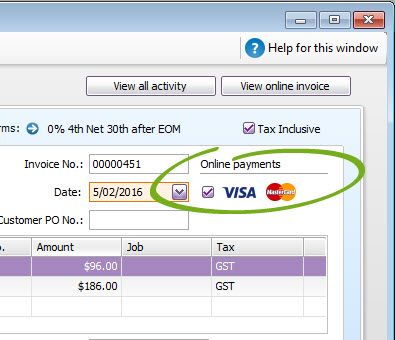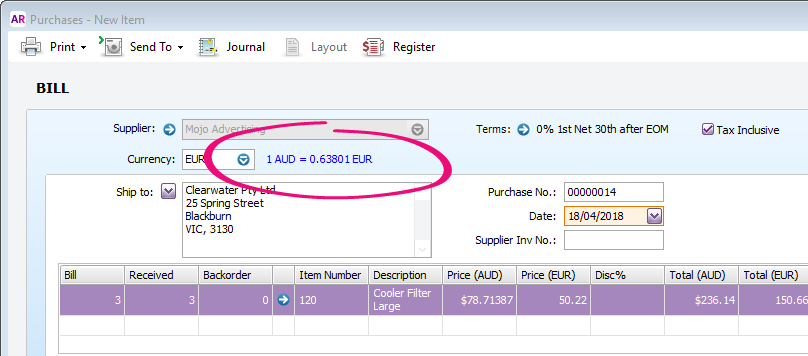Latest topics
Warning – watch out for fake (spam / phishing) emails pretending to be from MYOB
Hi Everyone We do recommend that customers protect and be on the lookout for fake (spam/phishing) emails that do pretend to be from MYOB. When we are made aware of these situations we will be posting details on this thread to alert users. Past examples will also be available on Warning – watch out for fake (spam / phishing) emails pretending to be from MYOB Here are some tips to protect yourself against fraudulent emails: Only open emails from email addresses that you trust. Legitimate invoices from MYOB small business products will only come from accountright@apps.myob.com or noreply@apps.myob.com Check that any links are valid before clicking on them. Links from genuine MYOB emails to external sites will always start with links.apps.myob.com. Ask yourself if you expected to receive the email. Check it against previous emails from the same company. Does the email address, design and style of writing match what you usually receive? Ensure you have good anti-virus protection installed that is up-to-date and have firewalls in place. Use common sense. If you’re not sure, use an external method of communication (such as a phone number from the company’s website) to contact the company that sent the email. If you're unsure whether an email message from MYOB is genuine or if you’d like further clarification, please forward a copy of the email to securityteam@myob.com or reach out to us via this forum, by starting a new post.236KViews0likes1CommentAccountRight 2015.2 now available
6 MIN READ In this AccountRight release, we’ve made it easier for you to get the help you need, when and where you need it. We’ve also fixed lots of issues, bugs and workflow problems so you can get on with your work faster and with fewer interruptions. And for Australian businesses with employees, great news - you can now pay super contributions to self-managed super funds using AccountRight!79KViews1like70CommentsCapital Purchases and Finance in AccountRight
HOW TO RECORD CAPITAL PURCHASES AND FINANCE IN ACCOUNTRIGHT There are many finance options available to purchase capital equipment. Commonly used in Australia are: chattel mortgages: ownership of the item transfers to the business when the lending company pays the supplier of the goods. hire purchase: ownership of the goods remain with the lending company until the agreement is paid out. lease agreements: ownership stays with the leasing body and the goods are never owned by the business. personal loans: these loans are usually from those close to the entity (e.g. directors, family or benevolent friends) and can be treated in the same manner as a chattel mortgage. This article will focus on chattel mortgages as it is the most commonly used within the SME community. It will look at: purchase of capital equipment with a long depreciation period (e.g. warehouse racking or workshop machinery) repayments handling purchases of motor vehicles. PURCHASE OF ITEMS Prior to recording the purchase transaction in AccountRight, you need to: 1. Assemble all the necessary paperwork – these may include: details of the purchase including any relevant serial numbers details of any deposits paid details of the disbursement from the loan document You should also determine: The total cost of the loan The amount of interest payable Establishment fees 2. Discuss with your accountant as to how they would like the items recorded in the Balance Sheet. They may be happy with it being recorded under one of the generic accounts, or they may ask that it be set up as a new account on the Balance Sheet. Every capital account must have an account immediately below it to show the depreciation accumulated to date. For example: 1-2901 Machinery At Cost CAP 1-2905 Machinery Accum. Depreciation N-T Or 1-2910 CNC Bridgeport Mill CAP 1-2950 CNC Mill Accum. Depreciation N-T The loan must be established on the chart of accounts with an account called ‘Unexpired Interest’ (see below). This is always set up as a Liability Account (Long Term) and is normally done as a Credit Card type account, so that money can be spent from and received into this account. 2-2100 ABC Loan for CNC Mill N-T 2-2105 Unexpired Interest on ABC Loan N-T In AccountRight, you do not receive money from the loan company – the loan is always populated by spending money from it. Entering the transactions in AccountRight In the example below, the equipment bill is listed as $89,590.20 with an interest of $12,863.05, totalling $102,453.25. The loan is to be paid back over 48 payments – 47 payments of $2137.57 and one payment of $1987.46. Create a card for the finance company. In our example, we’ll call it ‘ABC Loan’ . Create a purchase transaction for the equipment ($89,590.20), bearing in mind the following: Enter in detailed information (e.g. description of the item, particularly serial numbers, and information on warranty) The account should be the 1-xxxx determined earlier If you have multiple locations, it should also define where the item is to be located 3.Pay the bill, selecting the ‘Pay from Account’ as the 2-xxxx loan account set up earlier and entering in the amount of the loan ($89,590.20). Upon recording this example transaction, both the 1-xxxx account and the 2-xxxx account now have a value of $89,590.20. 4. Create a Spend Money transaction with the 2-xxxx loan account as the Pay from Account, and the Acct No. as the 2-xxxx Unexpired Interest account. In our example, the unexpired interest amount is $12,863.05. In our example, the accounts now look like this: That is the last time you’ll need to touch the 1-xxxx accounts until the accountant finalises the accounts and gives you a depreciation figure. A word of warning – unless you are familiar with the depreciation schedule that the accountant is using you should not attempt to determine the depreciation yourself. The depreciation is normally journaled in as part of the alignment journal and the other side of it is Depreciation on the P & L. REPAYMENT OF LOAN Making your first Payment As the establishment fee is normally added to the first payment, the first payment may be slightly higher than the remaining payments. Create a Spend Money transaction, selecting your bank account as the ‘Pay from Account’ The payment should show the repayment amount for the loan, including the establishment fee (if applicable). In our example, this would look like the following: 2-2100 ABC Loan $2137.57 N-T 6- xxxx Bank Charges $432.95 FRE Note: If you have a complete schedule from the finance company, it can be entered as: 2-2100 ABC Loan $500.00 N-T 2-2105 Unexpired Interest $1508.08 N-T 6- xxxx Bank Charges $432.95 FRE This method means that you have to make changes every month reflecting the principal/interest. You may be more comfortable leaving this adjustment to the accountant come EOFY, as it does not affect your day-to-day reporting. Making the second (and the next 46) payments These can be made following either of the above examples, minus the bank charges. It is better to wait until the money has come out of the bank and either picked up by bank feeds or shown on a statement to create the Spend Money transactions. If the finance company imposes fees for late payment, these should be allocated to a Bank Charges account. Penalty Interest should be allocated to an Interest Expense account – normally a 9-xxxx. Making the final payment Confirm with the loan company the amount of the final payment - it should be the net amount on the loan minus the unexpired interest. After the final payment is made, any amount on the loan account should equal the Unexpired Interest, but in opposite direction. Payment from the Loan to Unexpired Interest should zero both lines. HANDLING MOTORISED VEHICLES All motorised vehicles have a relatively short depreciation period compared to plant and equipment so are separated on the accounts list. There are also different ways of writing down the value of a motor vehicle, so seek the advice of your accountant. In recording any vehicle purchase, remember to record the Vehicle Identification Number (VIN) as it may be required for audit purposes. Other items that should form part of your record are the make, model, colour and registration number. Trucks, off-road vehicles, tractors, fork lifts, trailers and vehicles that are not passenger vehicles can be treated in the same manner as the equipment entries we used in the example above. This is also true of motor vehicles with a purchase price less than the Luxury Car Tax threshold. However, consideration should be given to the balloon, which seems to be an increasingly common means of writing loans for motor vehicles. The Balloon The balloon refers to the amount remaining after the number of payments specified in the contract has been paid. This amount needs to be paid back to the finance company to finalise the loan agreement. It is generally less than the written down value of the vehicle at the completion of the loan. Commonly, the balloon is rolled into a new loan figure as the vehicle is changed for a later model. Any loan document must specify the amount of the balloon at the completion of the loan. Below are the accounts required for a loan with a balloon: 1-xxx0 M-V at Cost 1-xxx5 M-V Accum Dep 2- xxx0 XYZ Loan M-V 2- xxx5 XYZ Loan Unexp. Int. 2-xx10 XYZ Loan – Balloon As with equipment loans, the loan is set up as a Credit Card type account. Using either Spend Money or Purchase and Pay Bill transactions, the vehicle is paid for from the loan account. Using Spend Money, the balloon is paid to the 2-xx10 account. The balance of the figure is then paid, using a Spend Money transaction, from the Loan Account to the Unexpired Interest Account. Deposits Paid Most car traders require a deposit to be paid by the owner/director. This becomes the first payment to the motor vehicle cost. On some occasions, this is included in the payment from the loan company and the deposit refunded by the car trader. The deposit should show as coming from and returning to the Director’s Loan account. Trade In A trade in is seen as a sale from your business to the car trader and must be acknowledged as such. It is normally recorded as an Other Income type account (8-xxxx Sale of Assets) with funds flowing to and from the Undeposited Funds account or another clearing account. If you are trading in a vehicle that is above the Luxury Car Tax Threshold (see below), there are rules that need to be followed and are outside the scope of these notes. Luxury Car Tax Threshold The government has determined that the vehicles over a certain value cannot be written off as a business expense. For the 2016 financial year, the Luxury Car Threshold is $63,184, or $75,375 for a fuel efficient vehicle. There are some exceptions to the application of the threshold. Most notable are utilities, emergency vehicles, vehicles specifically modified for use by disabled drivers/passengers, and vehicles purchased by registered charities. Any LCT 4-door utility should be discussed with your accountant and/or the ATO. Anything outside the LCT threshold cannot be claimed and the CAP figure should be 1/11th of the LCT limit. This means that if there is a loan supporting this purchase, the first $63,184 can be paid from the loan towards the vehicle as CAP. The unexpired interest and any balloon considerations should also be paid from the loan account. The remainder of the loan should be paid to the Director’s Loan account and this account used to pay the remainder of the vehicle, coded N-T. I understand this is a very vast and complex topic. I have opted to concentrate on Chattel Mortgage, being the most common form of financing. And included a brief description of the difference between the various forms of finance. Should you need any further information on anything covered in this article, or would just like to chat about finance, please comment below. I’d be happy to discuss. Happy reading!! Ron Boulton BAS Group 1300 BAS GRP (1300 227 477) ron@basgroup.com.au75KViews16likes39CommentsAccountRight 2015.3 now available
5 MIN READ If you’re considering moving from AccountRight v19 to the new AccountRight in the new financial year, this release will make it even easier for you to upgrade, to get online and to invite others to access your file. We’ve also made the necessary ATO updates to help keep Australian businesses compliant, so if you pay employees using AccountRight, make sure you install this update before your first pay run in July. You’ll also notice significant speed improvements when preparing general journal entries and recording customer payments.56KViews1like49CommentsAccountRight 2013.3 update now available
4 MIN READ We’ve been working hard to make AccountRight the fastest online accounting system out there, and if you’ve come along with us on this journey, thanks! While we know there's still more to do, we hope you like the improvements we've made in this release.44KViews0likes49CommentsAccountRight 2017.1.1 now available
3 MIN READ New PAYG tax tables apply from 1 July 2017. Install this update to ensure your business stays compliant. This release is for Australian businesses using AccountRight Plus or Premier only. If you’re in New Zealand, or use AccountRight Standard or Basics, you don’t need to install this update.43KViews1like29CommentsAccountRight 2018.3 now available
4 MIN READ In this release we’re bringing you multi-currency for import-only businesses, as well as easier invoice handling for your In tray, invoice payment reminders for your customers, Single Touch Payroll updates, and a few fixes and improvements to keep things running smoothly. This release makes it easier to manage bills—now you can get supplier invoices sent directly to your In tray from certain suppliers, and forwarding invoices to your In tray is easier and better than ever.41KViews2likes49Comments

